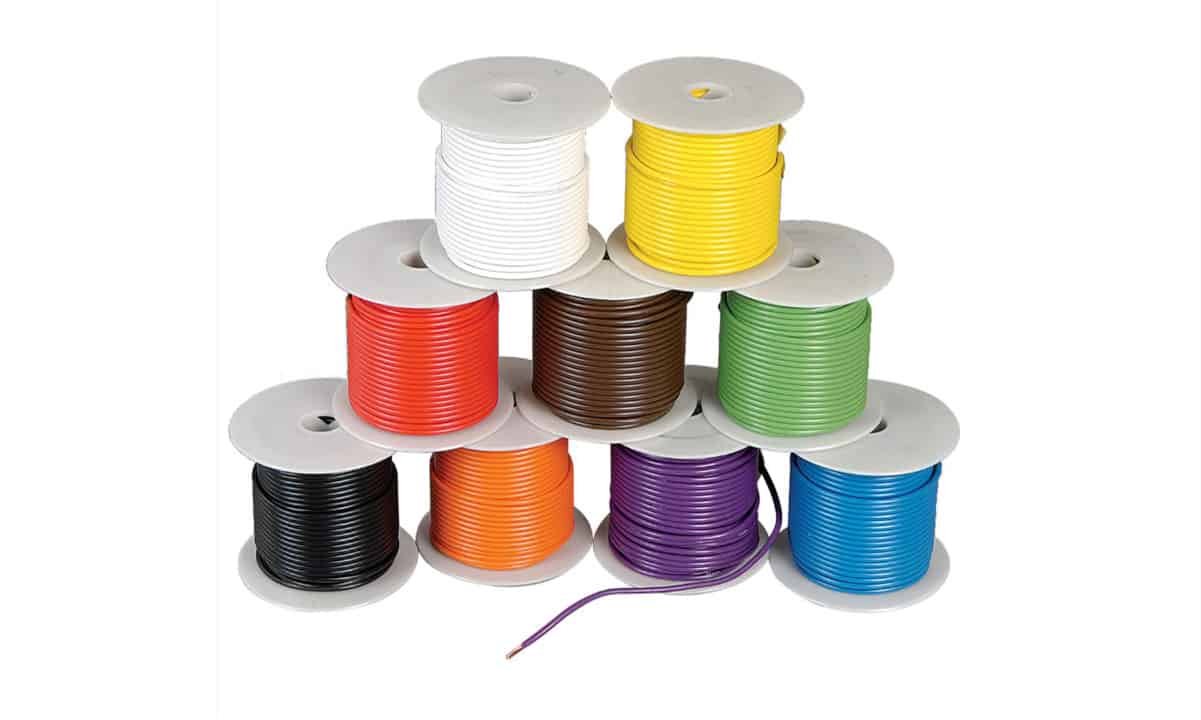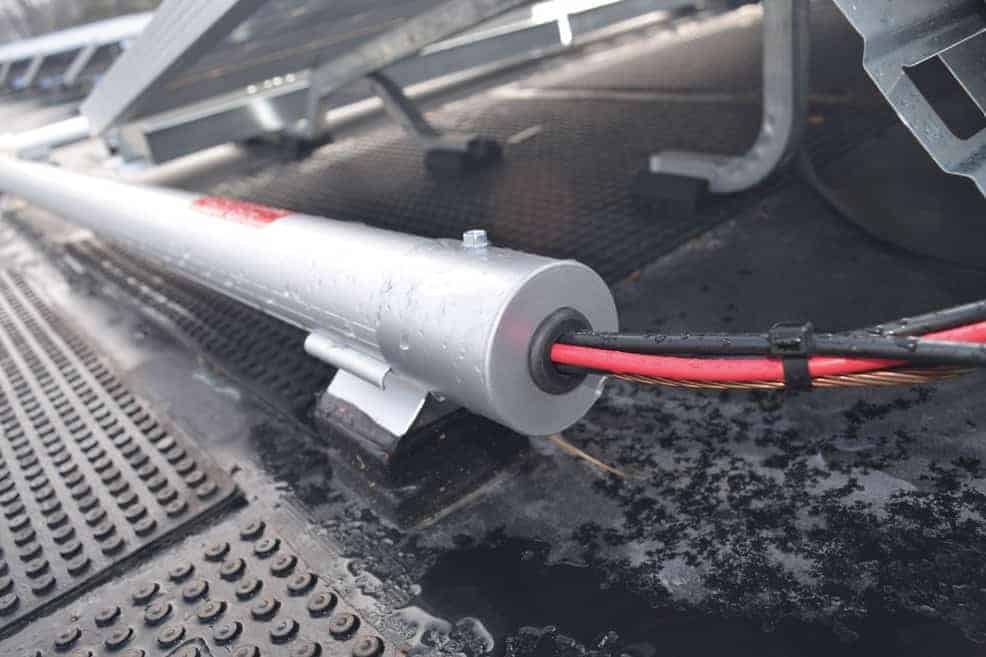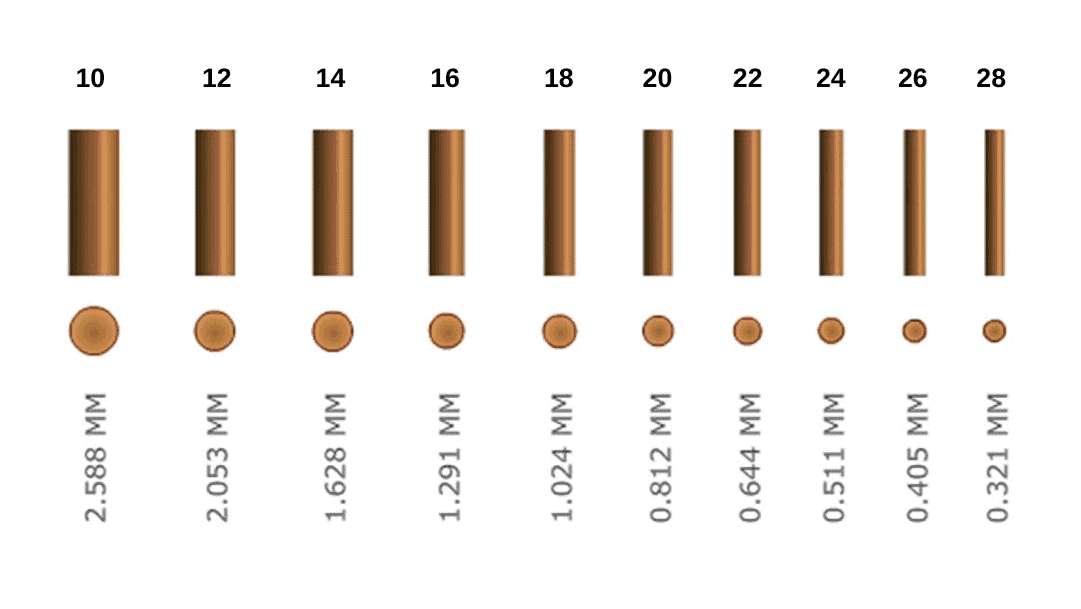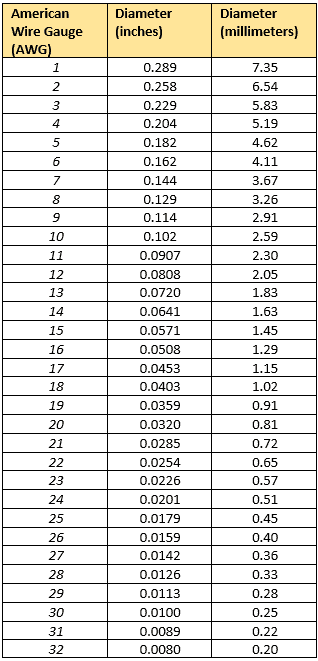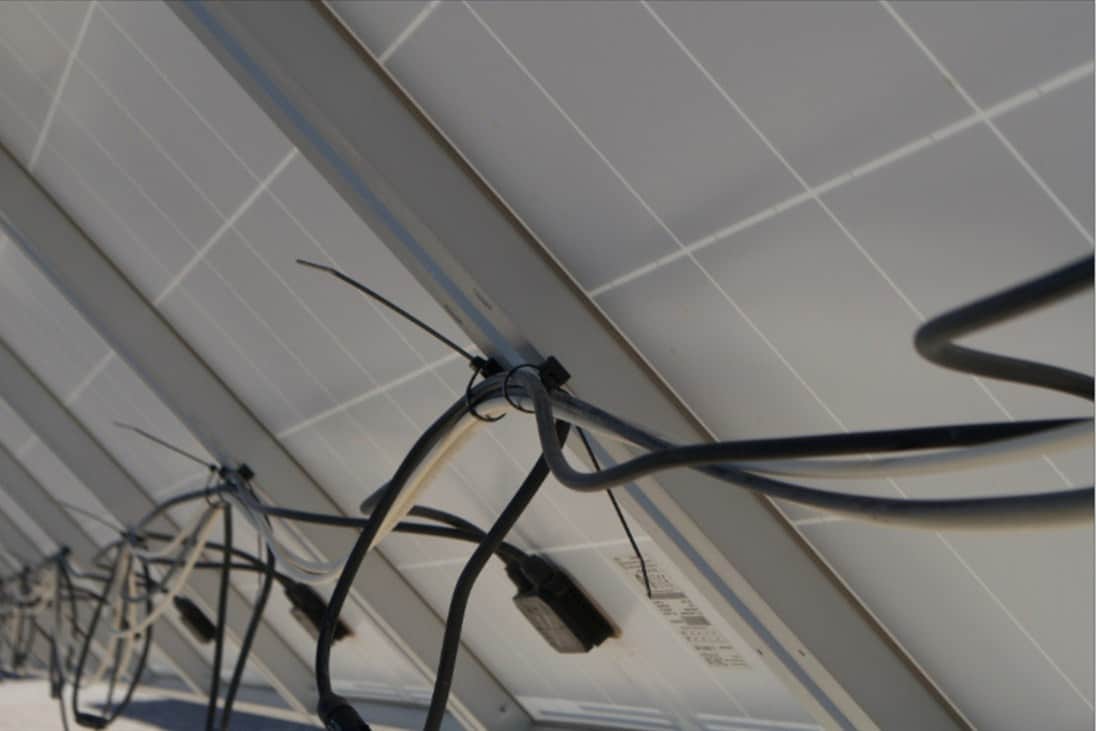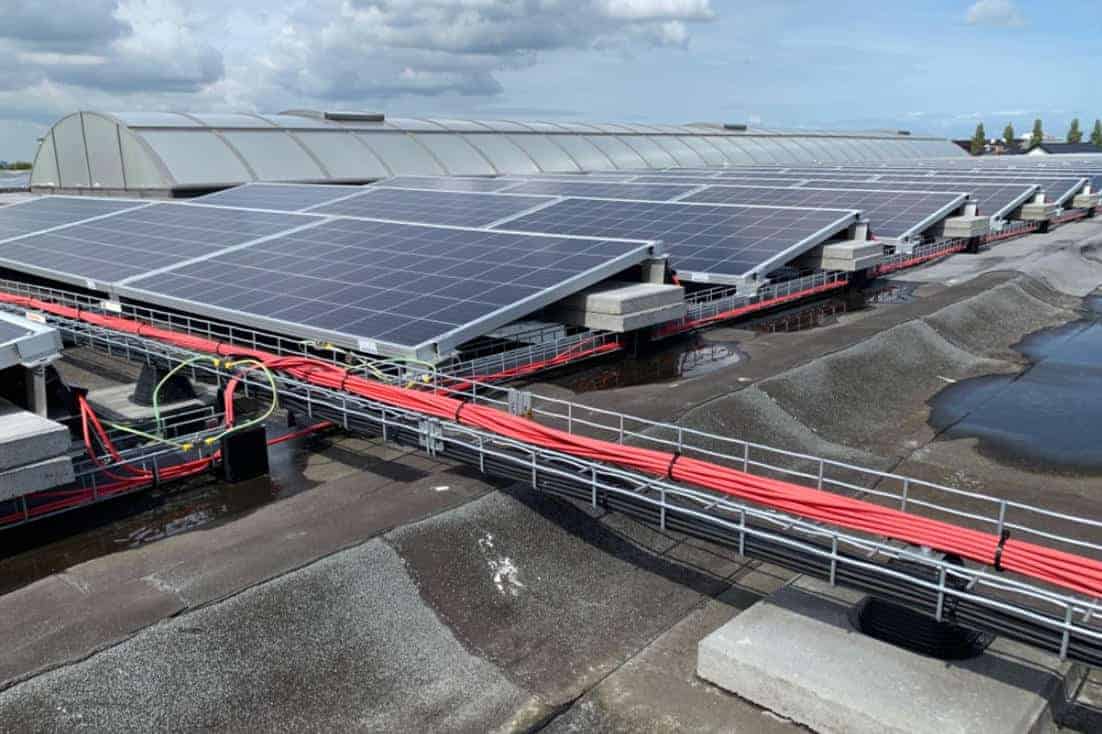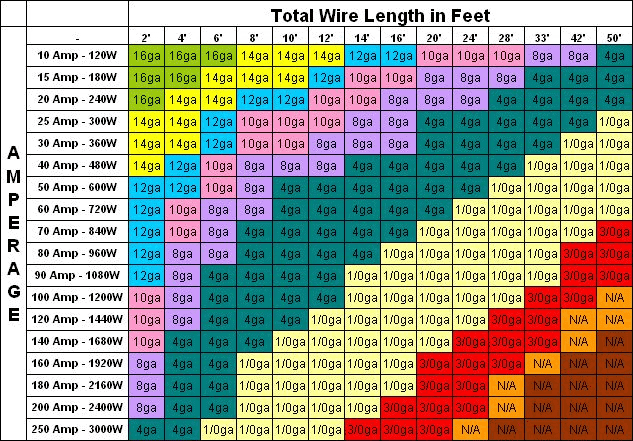Wiring is one of the most important things in building a complete solar system. And there are many steps involved in wiring, among which choosing the correct solar size is more of significant.
What size should the correct solar wire be? You may encounter this issue. Choosing the right solar wire size for your solar panel system can promote both operation and safety.
Generally speaking, if the wire size is too small, there could be some accidents, for example, the fire could be caused when the wire heats up too high. Thus, here we will discuss some questions about how to choose solar wire size.
Key points about solar wire size
- The standardized scale of solar wire sizes is called American Wire Gauge, or AWG. There are different capacities and different wire gauge sizes. The gauge number will influence the operation.
- In general, the higher the gauge number, the more resistance the solar wire has, and the lower the current it can deal with securely.
- Also, different using purposes require different wire sizes. For instance, the wire used to connect battery banks may require different sizes from that used to connect charger controllers.
- It can vary according to the types of your solar systems. Residential solar systems and commercial systems demand different wire sizes.
What is solar wire size?
Solar wire size refers to the size of the wire that you need to connect the components of the solar panel system.
As we all know, there are plenty of components in a solar panel system, and they include solar panels, batteries, charger controllers, and inverters. To build a complete solar system, you need to wire them together with wires to form a circuit.
Wires are comparable to pipes where water is carried and flows. Similarly, wires carry current and the current can flow through the wire from and to certain components.
Wire sizes refer to the diameter and length of the wires. If the diameter of a wire is large, the resistance of it will be small, and the current flow will be smooth and safe, otherwise, the resistance will be large and impede the flow. Similarly, if the length is too long, the resistance will rise too, which may cause difficulty for the current flow.
What is the normal scale of the solar wire size?
The average scale of wire sizes is named American Wire Gauge(AWG). You can Google for the normal residential usage of wire sizes and their corresponding ampere ratings. Or we take some of them as examples.
- 3/0 gauge: 200 amps (service entrance)
- 1/0 gauge: 150 amps (service entrance and feeder wire)
- 3 gauge: 100 amps (service entrance and feeder wire)
- 6 gauge: 55 amps (feeder and large appliance wire)
- 8 gauge: 40 amps (feeder and large appliance wire)
- 10 gauge: 30 amps (dryer, appliances, and air conditioning)
- 12 gauge: 20 amps (appliances, laundry, and bathroom circuits)
- 14 gauge: 15 amps (general lighting, and receptacle circuits)
How to decide the various wire sizes of the components of the solar system?
Before doing the calculations of each part of the system, you should learn several terms.
- Voltage: voltage refers to electric potential difference, which means the potential difference between two ends of a circuit in electrical charge. It is represented as ‘V’ in equations, and it is evaluated in volts (V).
- Voltage Drop Index: when the wire is undersized, the voltage could be reduced, leading to the voltage drop of the wire and power loss. The index of such reduction is called the voltage drop index, abbreviated as VDI.
- Current: current means electric current that flows in electrical circuits like water running in a tube. We use ‘I’ to represent it as a formula term. Current refers to the flowing rate of charges, which is evaluated in amperes (amps).
If you want to know more, you can check the link: How to Test Your Solar Panels Like Pro.
Wire size calculations of the components
The wire size used for your solar panel system is determined by the section load current, voltage, the length of the wire that will carry the current, and the voltage drop index.
For all the needed components of your solar panel system, you should consider the above-mentioned factors.
- For the connection of commercial solar panels of over 50 watts, 10 gauge wire is needed. According to the given sizes, the corresponding amps of 10 watts are 30 amperes. It means that the wire can handle the current flow of up to 30 amps per solar panel.
If you wire several panels together in parallel, then the circuit needs a larger gauge to form a combiner set. According to the number of solar panels you want to wire, you can choose the size of the wire.
Usually, to ensure the parallel work safely and smoothly, you can choose 3, 6, or 8 gauge wires to connect the solar panels to other components like the charger controller.
- For the connection between the solar charger controller and battery bank, it is said that you can select the same size gauge wire as that used in the combiner set of the parallel circuit.
But there is an exception when the solar panels’ combiner set works at a higher voltage than that of the charger controller. You should choose a larger wire size. We can explain it by setting an example.
If the charger controller works with a battery of 12V or 24V, while the solar panels work with a higher voltage like 48V, an adjustment will be necessary. The charger controller transformer could lower the voltage, and correspondingly, the current from the charger controller to the battery will increase.
- For the wires between the battery bank, the situation is different. If you need more than one battery in your solar system, the battery bank will include at least two batteries. So you need to choose the right wire size to connect them, and other sections.
Because the battery bank will connect the inverter at the same time, the current of that wire should be able to handle the demand for both inverting and charging. Therefore, the current flow inside the wire of the battery bank could be the highest.
In that case, you can choose the 1/0, or 3/0 gauge wire, and the provided current could be from 150amps to 200amps.
- For the connection from the inverter to your multiple appliances, you can choose 12 or 14 gauge wires. They need relatively less current flow.
Wire length calculations of the components
We know from the previous discussion that if the wire is undersized, the voltage drop will be severe and there will be more power loss. Apart from that, the length of the wire can also influence the performance of the solar system.
Because the length of the wire could increase the resistance of the wire, and result in excessive voltage drop, you should do some calculations of the required wires.
Also, the wire between the solar panel array and the charger controller is the longest of all the connections of the components. Thus, you need to select the wires with the right size and length so that the current flow could be safe and smooth.
The voltage drop index can be calculated by the following formula:
VDI = (AMPS x FEET) ÷ (VOLT DROP% x VOLTAGE)In this formula, AMPS refers to the current of the wire set, FEET refers to the length of the required wire, VOLT DROP% refers to the voltage drop index, and VOLTAGE refers to the voltage of the wire.
According to general guidelines, the normal voltage drop of such a setup should be less than 2%.
Therefore, you can first find or calculate all the needed values, then you work out the required length of the wire. The current and the voltage are usually determined by the types of gauge wire.
You can use this wire size chart to find out what size you need.
Conclusion
In general, to make the solar system operate well and safely, you should wire them correctly. And to wire them perfectly, you should first select the correct wire sizes. During the whole choosing process, you need to make some calculations and researches.
This article gives information about every detail on how to figure out the required dimensions and decide the sizes each component requires. Also, different people need the solar system to meet different power requirements.
Wiring a solar panel system may be more complex than it initially appears. But the good side is that you can learn much knowledge about how to select the correct wire size and length.

